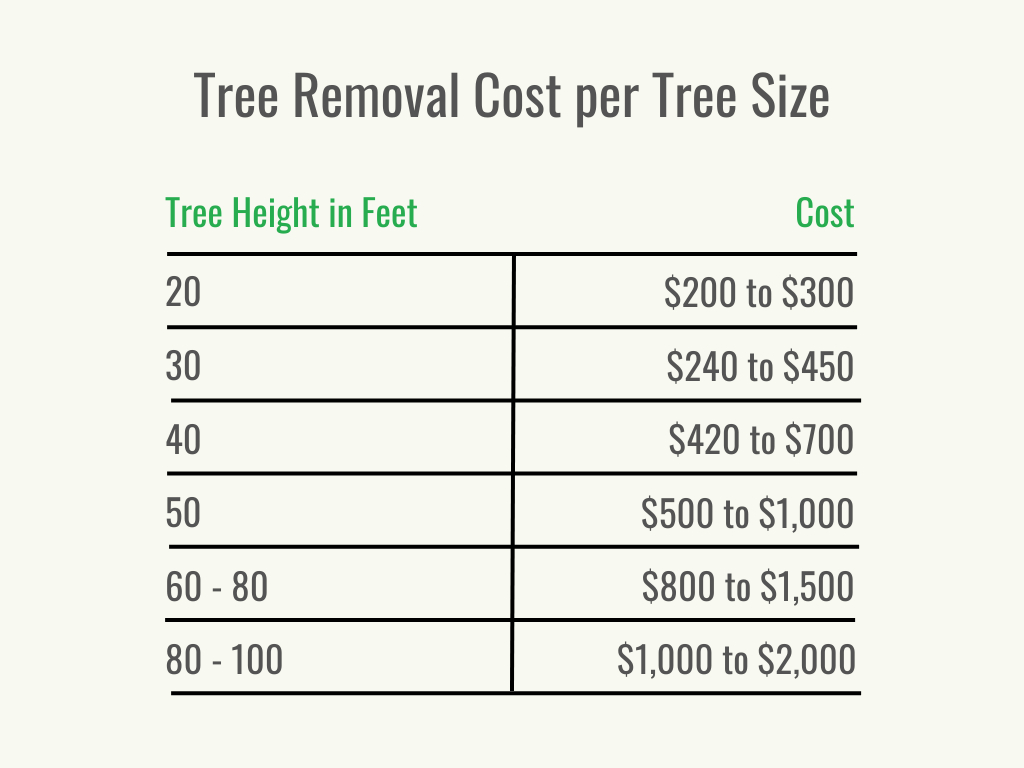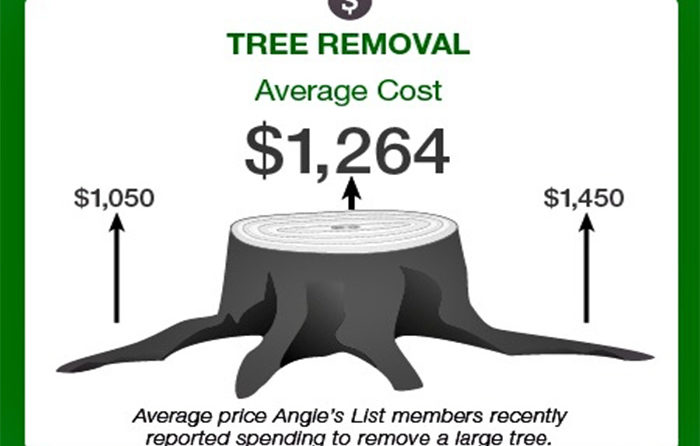Featured
Table of Contents
- – Ponca City, OK Stump Removal Delivery Costs
- – Ponca City, OK Tree Removal Red Flags: Pricing...
- – Ponca City, OK Tree Trimming Case Studies: Co...
- – Best Tree Cutting Costs In Ponca City, OK
- – How Long Does A Tree Service Installation In ...
- – How Much To Budget For An Tree Service In Pon...
- – Leading Tree Clearing Services In Ponca City,...
- – What Should An Arborist Cost In Ponca City, ...
- – Comparing Tree Removal Costs In Ponca City, OK
- – Ponca City, OK Tree Cutting Rate Structure
- – Ponca City, OK Stump Grinding: What Affects ...
- – Winter Tree Trimming Costs In Ponca City, OK
- – Ponca City, OK Tree Service Loyalty Programs
- – Ponca City, OK Arborist Rate Structure
- – Ponca City, OK Tree Trimming Price Estimate ...

The subsections below provide more detailed details about prices, consisting of a typical range for each. TypeAverage Elimination CostPineConiferPalmMagnoliaArborvitaeAshCedarSweet GumEucalyptusSycamoreCypressOakMaplePoplar You can anticipate to pay between to eliminate a pine, depending on its size. Eliminating a pine is one of the more cost effective jobs unless it is one that has been around for several years and is quite big.
Ponca City, OK Stump Removal Delivery Costs
Pines also have a tap root that grows deep into the soil, which can prove to be harder to remove. The process itself involves an expert cutting the tree, clearing the base, cutting the surface area roots, getting rid of the stump, and lastly dealing with the soil. Without a professional hand, you risk leaving pine seedlings behind, which will fall from the roots of distressed pines.
Ponca City, OK Tree Removal Red Flags: Pricing Edition
The U.S. national average for conifer removal is around to have the conifer lowered, hauled away, and the stump ground or gotten rid of completely. Conifers are generally easier to remove, and despite the fact that they can grow rather high, they do not cost a fortune to remove. Conifers include pine, spruce, fir, and juniper trees.
Ponca City, OK Tree Trimming Case Studies: Costs
While conifers are gorgeous, they eliminate native plants and certain kinds of lawn. This is since they need a lot of water and nutrients to make it through, so they leach it off surrounding plants. They likewise have an expansive network of roots, which can affect your home's structure. The typical price of palm elimination depends upon the height as much as the type, ranging from.
Best Tree Cutting Costs In Ponca City, OK
That is why it is essential to know which type you are eliminating. While you do not need an herbicide to eliminate a palm tree, there are some actions your elimination professional will need to require to ensure the job is done correctly. There are 2 methods they can eliminate them: by slicing them down or digging them up.
How Long Does A Tree Service Installation In Ponca City, OK
From there, they remove the actual tree and then the stump. Expect to pay in between to eliminate this type of tree, depending on the exact size and details of the job.
How Much To Budget For An Tree Service In Ponca City, OK
There are 3 types: green, white, and black ash. White ash is understood for its many colors. With its gray-tinged bark, its leaves are green or purple in the spring and golden yellow or purplish-red in the fall. They take pleasure in moderate climates and lots of sun. The green ash is named such due to its green or yellow foliage.
Leading Tree Clearing Services In Ponca City, OK: Pricing

Due to the variation in height, the removal cost variance is large from. A coniferous, evergreen tree, the cedar is a hardy species.
What Should An Arborist Cost In Ponca City, OK?
The development of false cedars differs from 50 feet up to 230 feet high. With star-shaped leaves and stunning fall colors, the sweet gum is considered a medium to large tree.
Comparing Tree Removal Costs In Ponca City, OK
It has a huge root base of 40 to 50 feet, which affects the removal cost. Generally, it costs in between to eliminate a eucalyptus. Eucalyptus are not typical everywhere, but they are rather large compared to others, which is why even the smaller sized ones are so costly to remove. Initially from Australia, eucalyptus are intrusive plants that grow in thick groves that secure native plants.
Ponca City, OK Tree Cutting Rate Structure
There are a handful of ways to do this, including burning, pulling, grinding, or killing them with herbicide. Expect to pay in between to eliminate sycamores, based upon the height, trunk size, and amount of work included. Sycamores are one of the largest hardwood trees, usually varying from 60 to 100 feet high and as wide as 15 feet.
Ponca City, OK Stump Grinding: What Affects The Price
The first two actions will expose the insides of the tree and cut off the flow of nutrients up the trunk. From there, a professional uses herbicide to kill the tree and cuts down the trunk. They will eliminate the stump. Otherwise, brand-new sprouts may grow from it. Lowering and eliminating a mature cypress could cost as much as.
Winter Tree Trimming Costs In Ponca City, OK
There are various kinds of Cypress trees, but the most common are the Leyland, Arizona, Bald, and Italian. The Bald Cypress grows in swampy or very wet locations while the others delight in a dry, warm, or hot climate (stump removal). They can grow as high as 80 to 100 feet high
Ponca City, OK Tree Service Loyalty Programs

Prone to diseases, the Cypress is among the most prized woods for furniture. The typical oak grows to around 60 feet, and depending upon the intricacy of the removal, it costs an average of to eliminate. The exact size of your oak and the effort needed to fell it impact what you will really pay for removal in addition to any additional services like stump grinding.
Ponca City, OK Arborist Rate Structure
Access to the trees and the roots will also affect the total cost. Maples are typically amongst the more costly trees to eliminate because of their size and the work included in the removal.
Ponca City, OK Tree Trimming Price Estimate For Homeowners
Poplars are giants of the types. Growing as high as 90 to 115 feet, these huge woods are generally found in North America and consist of the aspen, cottonwood, and balsam trees. Boasting an extensive root system, poplars can be expensive to eliminate when fully grown. The procedure to get rid of trees involves all the trimming and cutting of the branches and trunk, bringing it down to a stump.
Table of Contents
- – Ponca City, OK Stump Removal Delivery Costs
- – Ponca City, OK Tree Removal Red Flags: Pricing...
- – Ponca City, OK Tree Trimming Case Studies: Co...
- – Best Tree Cutting Costs In Ponca City, OK
- – How Long Does A Tree Service Installation In ...
- – How Much To Budget For An Tree Service In Pon...
- – Leading Tree Clearing Services In Ponca City,...
- – What Should An Arborist Cost In Ponca City, ...
- – Comparing Tree Removal Costs In Ponca City, OK
- – Ponca City, OK Tree Cutting Rate Structure
- – Ponca City, OK Stump Grinding: What Affects ...
- – Winter Tree Trimming Costs In Ponca City, OK
- – Ponca City, OK Tree Service Loyalty Programs
- – Ponca City, OK Arborist Rate Structure
- – Ponca City, OK Tree Trimming Price Estimate ...
Latest Posts
How Much To Expect To Pay For An Tree Service In Russellville, KY
Free Stump Removal Quotes In Stow, OH
Fair Lawn, NJ Tree Service Cost Guide: What You Need To Know
More
Latest Posts
How Much To Expect To Pay For An Tree Service In Russellville, KY
Free Stump Removal Quotes In Stow, OH
Fair Lawn, NJ Tree Service Cost Guide: What You Need To Know